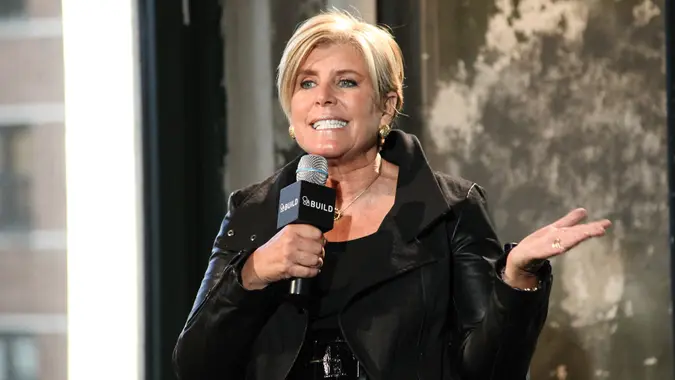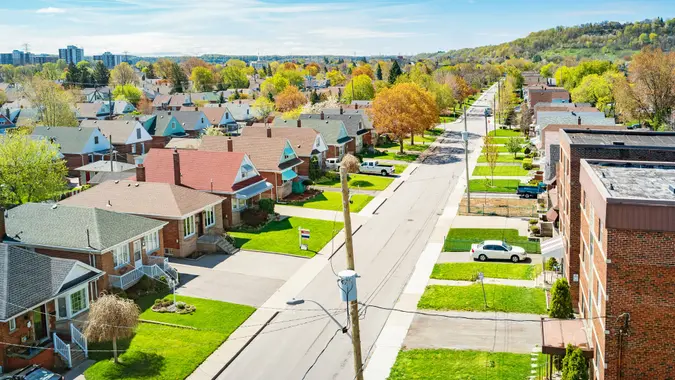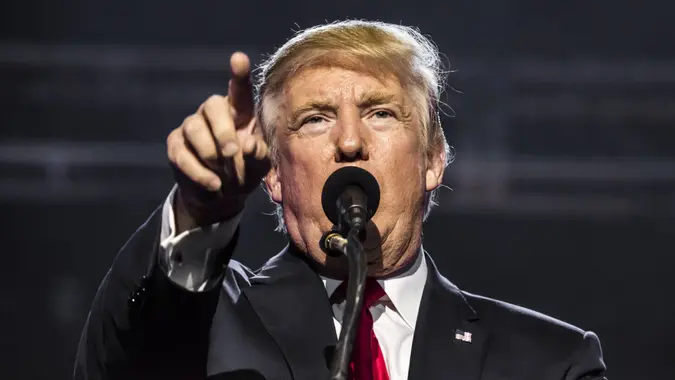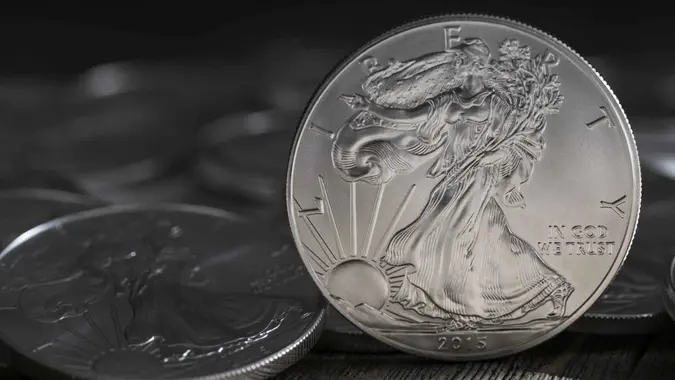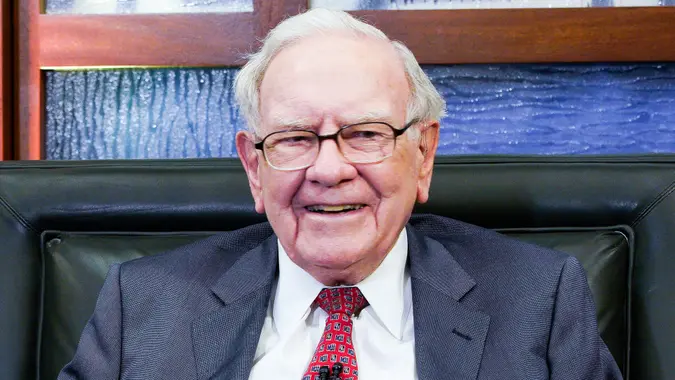5 Things To Do With $1,000: Rachel Cruze vs. Jaspreet Singh

Commitment to Our Readers
GOBankingRates' editorial team is committed to bringing you unbiased reviews and information. We use data-driven methodologies to evaluate financial products and services - our reviews and ratings are not influenced by advertisers. You can read more about our editorial guidelines and our products and services review methodology.

20 Years
Helping You Live Richer

Reviewed
by Experts

Trusted by
Millions of Readers
Money experts Jaspreet Singh and Rachel Cruze are well known for providing helpful, personal finance tips to their viewers, but they don’t always agree.
In a video on his YouTube channel, Minority Mindset, Singh outlined his five recommendations for what you should do when your savings reach $1,000. In response, Cruze made a video reacting to and discussing Singh’s tips while adding her own insights.
Read on to see whether or not these two experts agree on the best ways to use $1,000.
What Does Jaspreet Singh Say?
Once you’ve saved $1,000, Singh suggested using that money to make the following five “upgrades” to build your wealth.
Upgrade Your Knowledge
First, Singh said to invest in your education — and yourself — by reading 25 books on money management, investing and business. According to him, reading books can provide an MBA-level education, without the MBA price tag.
Cruze agreed that reading can help you gain a lot of financial knowledge. After all, Singh recommended Dave Ramsey’s book, “The Total Money Makeover,” and Cruze is one of Ramsey Solutions’ money experts.
However, Cruze also explained that personal finance is 80% behavior and 20% knowledge, and that your actions will improve your financial situation far more than knowledge will.
Upgrade Your Financial Goals
Singh also advised reviewing your financial goals and considering whether you’re limiting them too much.
“If you believe building something bigger is possible, you’re going to be working to build something bigger,” added Singh.
As someone who helps people get out of debt and gain control of their money, Cruze certainly agreed with the value of financial goal setting. She said some financial goals are “the fuel behind how the reality of your money actually plays out.”
Upgrade Your Investments
After you examine your financial goals, Singh recommended reducing your spending and increasing your income, so you can have more to invest.
He said people who build real wealth don’t earn money to spend; instead, they earn money to invest, because “your investments are what is going to make you wealthy.” Singh noted that while spending less often means making some sacrifices, you can have more to spend later if you invest it now.
Once again, Cruze agreed with Singh and emphasized how wealthy people use investing to create a passive income and “have their money be making money while they sleep.”
However, Cruze cautions you to hold off on prioritizing investing until you’re out of debt — except for your mortgage — and have a fully funded emergency fund.
Upgrade Your Time
Singh wants you to be aware of the value of time and the cost of wasting it. To make better use of your time, Singh suggested canceling a subscription, like Netflix, for six months to a year and using the extra time to read books, watch educational videos or work on something that can increase your income.
Cruze agreed with the financial advantage of having a side hustle and earning extra money, especially for those in what Cruze calls a “season of sacrifice” while paying off debt or saving for a big financial goal.
But she said working too many hours a week is unrealistic over the long term, especially once your finances are in good shape.
Upgrade Your Cash Flow
Singh’s final recommendation after saving $1,000 is to start investing your money in things that can produce a cash flow instead of just focusing on retirement accounts, from which you won’t see the money for years to come.
Singh likes passive, dividend-producing, long-term investments such as index funds and real estate. He also personally invests in other businesses.
Cruze also recommends investing beyond your retirement account but advises against single-stock investing. But if you have your debt, emergency fund and retirement account taken care of, Cruze thinks spending some of your money is OK, too.
What Does Rachel Cruze Say?
While Cruze agreed with most of Singh’s advice, she recommended a different path to building wealth once you’ve saved $1,000 and explained Ramsey Solutions’ seven baby steps for gaining control of your money.
The first step is to build a $1,000 starter emergency fund to cover your expenses while you work on the second baby step, paying off your debt.
With your debt out of the way, you can work through Ramsey’s other baby steps, including building a three- to six-month emergency fund, investing for retirement, saving for your children’s college education and paying off your mortgage.
Only after completing these steps does Cruze recommend that you focus on the seventh baby step: building wealth.
More From GOBankingRates
- Nearly 1 in 3 Americans Hit by a Costly Holiday Scam, Norton Survey Shows -- How To Avoid This
- Here's What the Average Social Security Payment Will Be in Winter 2025
- How Middle-Class Earners Are Quietly Becoming Millionaires -- and How You Can, Too
- The Easiest Way to Score $250 for Things You Already Do
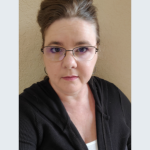 Written by
Written by  Edited by
Edited by 




